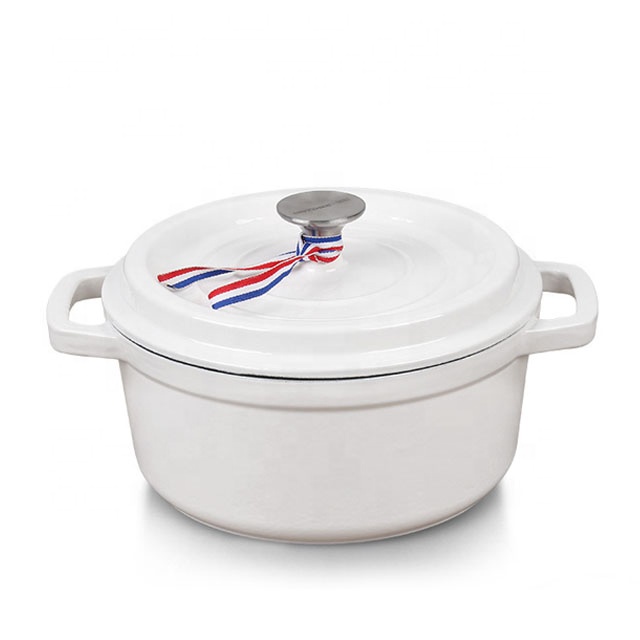
Differences Between Wok and Cast Iron for Cooking Performance and Versatility
Wok vs. Cast Iron A Culinary Showdown
When it comes to cookware, two options reign supreme the versatile wok and the sturdy cast iron skillet. Both have their unique characteristics, advantages, and cultural significance, making them staples in kitchens around the world. Understanding the differences and benefits of each can help you decide which one is the right fit for your cooking style and preferences.
The Wok Versatility and Speed
Originating from China, the wok is a round-bottomed pan designed for high-heat cooking. It is traditionally made from carbon steel or cast iron, with modern versions often featuring non-stick coatings. The unique shape of the wok allows heat to concentrate in the center, making it ideal for stir-frying, sautéing, and steaming. The high, sloped sides promote quick tossing and blending of ingredients, which is crucial for retaining the flavor and nutrition of vegetables.
One of the key advantages of a wok is its versatility. Beyond stir-frying, it can be used for deep frying, boiling, and even baking. Its ability to handle high temperatures without warping makes it perfect for quickly searing meats to lock in juices, while its capacity to hold generous portions makes it ideal for family meals or gatherings.
Moreover, woks heat up quickly and evenly. With the right technique, you can achieve a beautiful wok hei, the coveted breath of the wok, which imparts a smoky flavor to stir-fried dishes. This characteristic is particularly important in Asian cuisine, where the right flavor profile can elevate a dish from ordinary to exceptional.
Cast Iron Durability and Flavor
In contrast, the cast iron skillet boasts a long history in various culinary traditions, especially in Southern cooking and outdoor camping. Made from molten iron, cast iron skillets are known for their incredible durability and heat retention. When properly seasoned, they develop a natural non-stick surface that enhances flavor over time and improves with each use.
One of the standout features of cast iron is its ability to maintain steady temperatures, making it excellent for slow-cooking, frying, and baking. From cornbread to crispy fried chicken, a cast iron skillet can handle diverse cooking methods, making it a favorite among home chefs and professional cooks alike. Additionally, it can transition seamlessly from stovetop to oven, allowing for a variety of cooking techniques without the need for multiple dishes.
wok vs cast iron

Cast iron cookware also boasts high levels of iron, which can subtly enhance the nutritional value of your meals. Acidic foods like tomatoes can sometimes react with the seasoning of a cast iron pan, leading to a slight metallic taste. However, used correctly, the flavor absorbed by a well-seasoned skillet can enrich recipes, adding depth and complexity.
Maintenance and Care
Both woks and cast iron skillets require some attention in terms of maintenance, although the specifics differ. Wok maintenance often involves seasoning, a process that involves coating the cooking surface with oil and heating it to create a protective layer. Proper care keeps the wok non-stick and prevents rust, ensuring longevity. It is best to avoid using soap, as it can strip the seasoning, and instead, use hot water and a gentle scrubber.
Cast iron skillets, on the other hand, also need seasoning but tend to be more forgiving. They should be cleaned after each use by wiping them out with a paper towel or cloth. Occasionally, they may need a scrub with hot water and a brush to remove stuck-on food, but harsh soaps should be avoided. Like woks, cast iron pans should periodically be seasoned to maintain their non-stick surface.
Conclusion Which One to Choose?
The decision between a wok and a cast iron skillet ultimately comes down to your cooking style and preferences. If you enjoy high-heat cooking, quick meals, and the art of stir-frying, a wok may be your best option. The shape and design allow for fast cooking and bold flavors, making it a favorite for Asian cuisine.
However, if you appreciate the durability, versatility, and heat-retention of cast iron, you might find it indispensable for a wide range of cooking methods. It's ideal for everything from baking to frying, and its ability to develop flavor over time makes it a beloved tool in many kitchens.
In conclusion, both woks and cast iron skillets have their place in a well-equipped kitchen. Consider your culinary habits, personal taste, and the types of dishes you enjoy preparing to make the best choice for your cooking adventures.
-
Season Cast Iron Perfectly with GPT-4 Turbo TipsNewsAug.01,2025
-
High Quality Cast Iron Cookware - Baixiang County Zhongda MachineryNewsAug.01,2025
-
Premium Cast Iron Pan: Durable & Perfect HeatNewsAug.01,2025
-
High Quality Kitchen Durable Black Round Cast Iron Cookware Pancake Crepe Pan-Baixiang County Zhongda Machinery Manufacturing Co., Ltd.NewsAug.01,2025
-
Cast Iron Cookware - Baixiang County Zhongda Machinery | Nonstick, Heat ResistanceNewsAug.01,2025
-
High Quality Kitchen Durable Black Round Cast Iron Cookware - Baixiang County Zhongda Machinery | Non-Stick, Heat Retention, DurableNewsJul.31,2025


